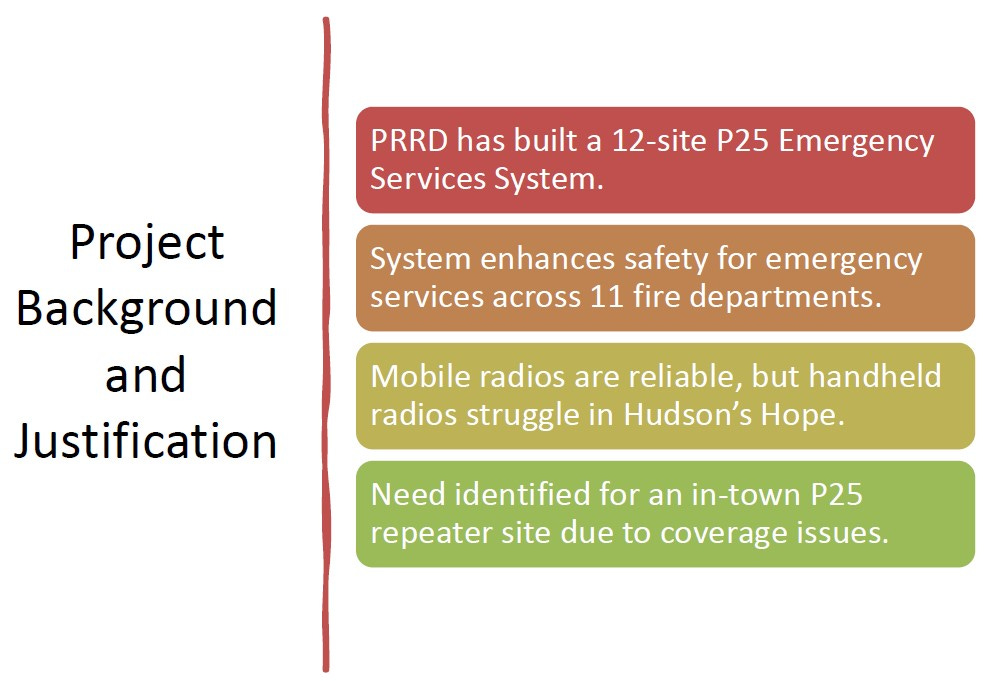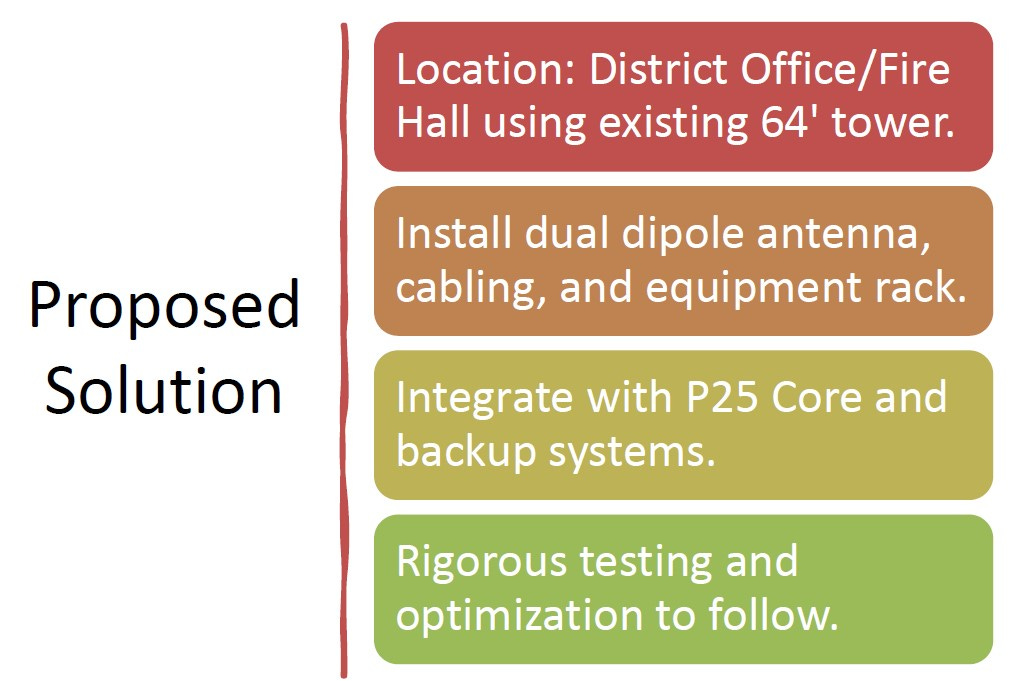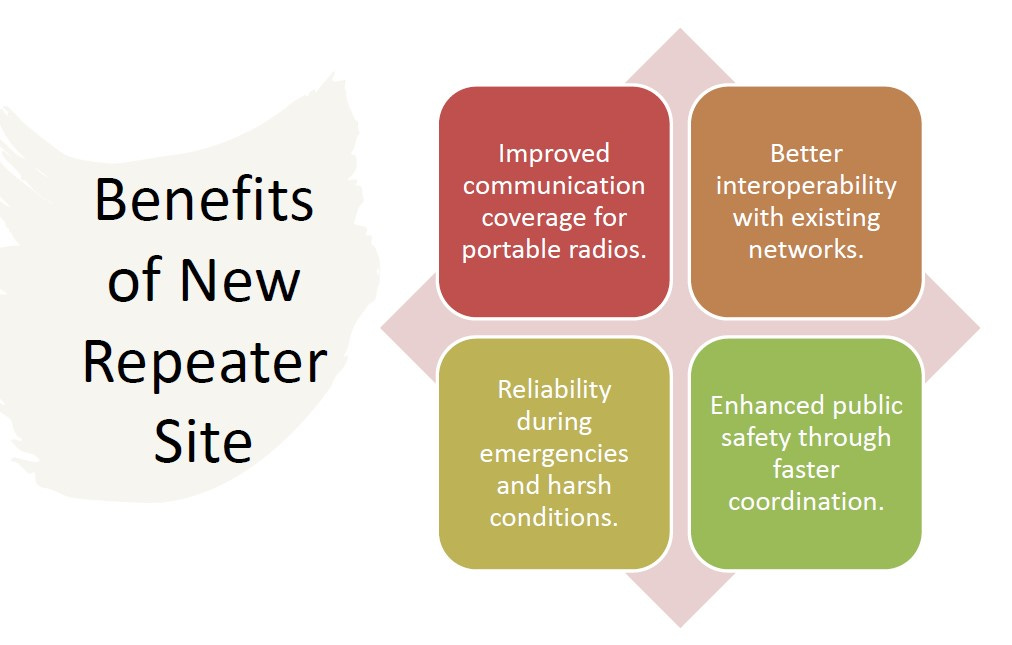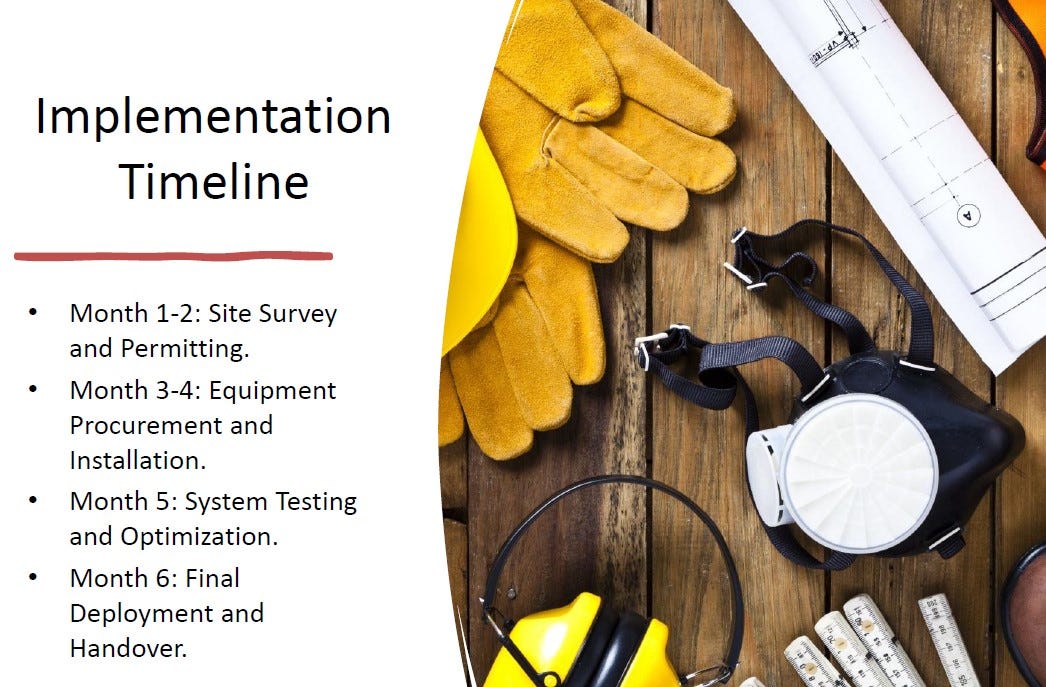Emergency communications in Hudson's Hope will improve with additional repeater, new system
Handheld radios are vital method of communication for fire fighters, says Chief.
Hand-held portable radios are key components of the day-to-day operations equipment at the Hudson’s Hope Fire Department. They are the fire fighters’ immediate lifeline for help should a threatening situation develop.
But Hudson’s Hope has a problem receiving and transmitting using the devices, the primary method of communication for fire fighters at the scene of an incident.
These radios are so critical that they have been identified in WorkSafe BC regulations, Section 31.23(2) which states that effective communications must be maintained by firefighters inside and outside of closed locations, according to Hudson’s Hope Fire Chief Fred Burrows. Burrows and Petron Communications’ Operations Manager Justin MacKinnon presented a proposal to improve radio communications in Hudson’s Hope to the Peace River Regional District’s Rural Budgets Administration Committee (RBAC) on April 17.
It’s important for fire fighters to use their handhelds to call for assistance, Burrows said, because dispatch doesn’t work with cellphones, and currently, if they are at a call and use the handhelds to call for assistance, chances are they’re not going to get through.
“That presents a problem, as an employer, in regard to fire fighter safety.”
“With the issue around transmitting and receiving, we have engaged Petron Communications, along with Harris Radios to put their engineers onto the problem and provide a viable solution. The proposed solution will provide much better coverage within the district, both along Highway 29 in Area E and portions of Highway 29 in Area B,” said Burrows.
Since 2021, the regional district has been planning for a transition to the P25 radio system for fire rescue services within the region. The request for proposals was issued in 2022, and testing of the system began in January.
Because the regional district had the forethought to build this P25 system, it saves time, money and creates lots of flexibility, said MacKinnon.
“This is a proposal for a P25 Emergency Communications repeater site – what it’s going to do is improve the reliability and interoperability within the Hudson’s Hope area. Obviously, it’s targeted for first responders in the Hudson’s Hope area,” he said.
Hudson’s Hope’s uniqueness is part of the problem with communications. Not only is the community in a valley, but it also has two fire halls, one in the town and one at Beryl Prairie. The repeater is on Bullhead Mountain which is the highest point between the two halls.
As one comes into the valley from the dam, the signal loss begins, MacKinnon explained.
“So, we thought, how do we flood the town of HH and the highway in both directions with better coverage? You put a repeater there.”
The new design will utilize the existing 64-foot tower at the Hudson’s Hope town hall.
“We can house the new repeater inside city hall, we already have a network connection, they’ve already got back-up power. It makes it a very easy add-on, to add this to the system.”
“But the increased signal in and around the Hudson’s Hope area, and the highways going in both directions is night and day,” he said.
MacKinnon estimates that it will take a couple of months to finish the engineering, get it on paper and submitted to Industry and Science Economic Development Canada for a new repeater frequency, which has a six-to-eight-week turnaround on applications.
With another few months to order and test the equipment, and do the installation, MacKinnon says that in six months from the day they get the green light, the new system will be up and running.
The total estimated cost of the project is $151,209.33 plus annual maintenance costs of $6,000. This is approximately one-third of the cost of building a new site, which MacKinnon says would cost between $300,000 - $500,000.
“The rationale I would add to this is that the rest of the fire departments within the regional district benefit from the fact that the towers they use, overlook the towns that they’re in,” MacKinnon said. “Fort St. John is on Mountainview subdivision, you can see it from the fire hall; Dawson Creek fire department, you can see the tower from the fire hall. In Hudson’s Hope’s case, it’s 20-30 clicks away.
“Therein lies the issue.”








